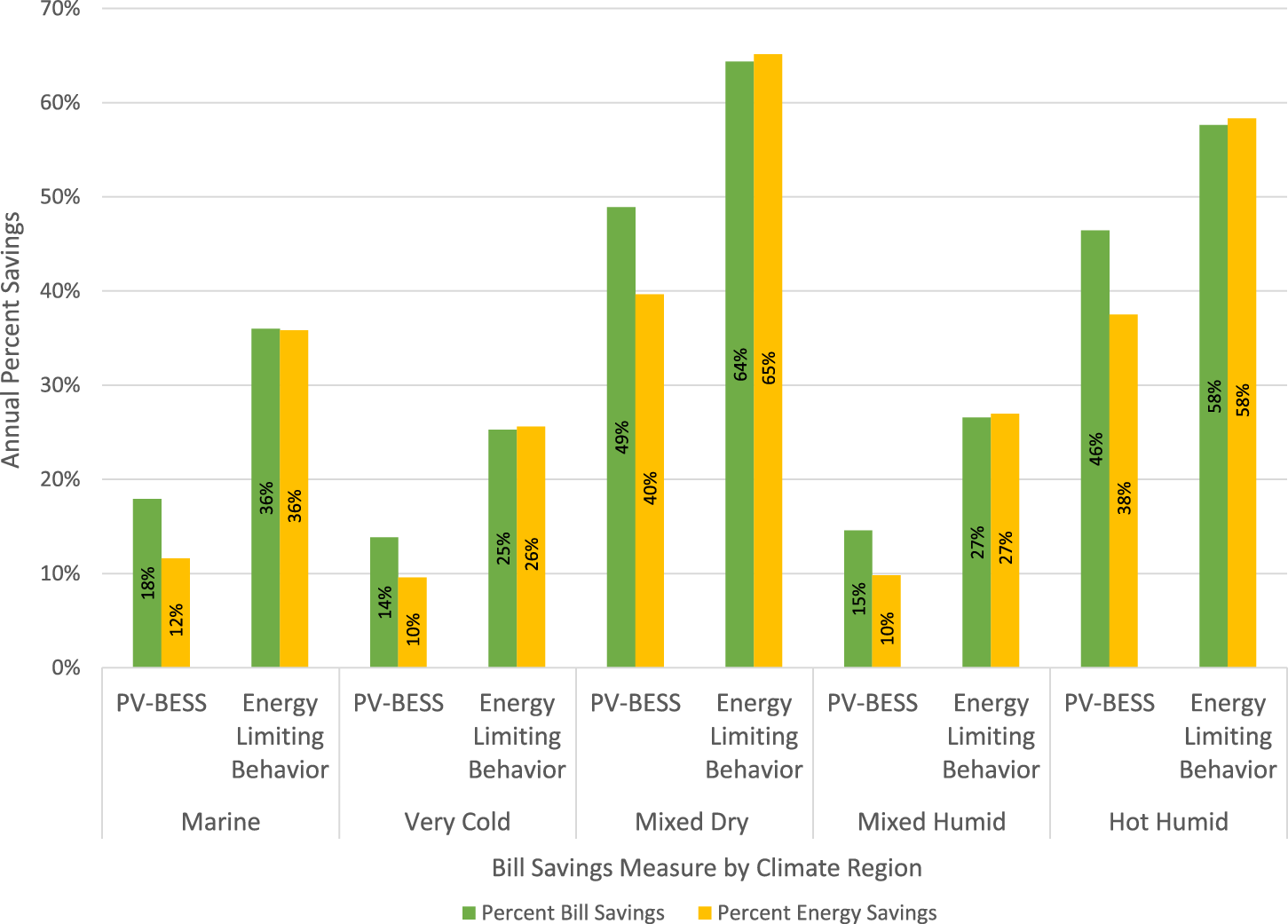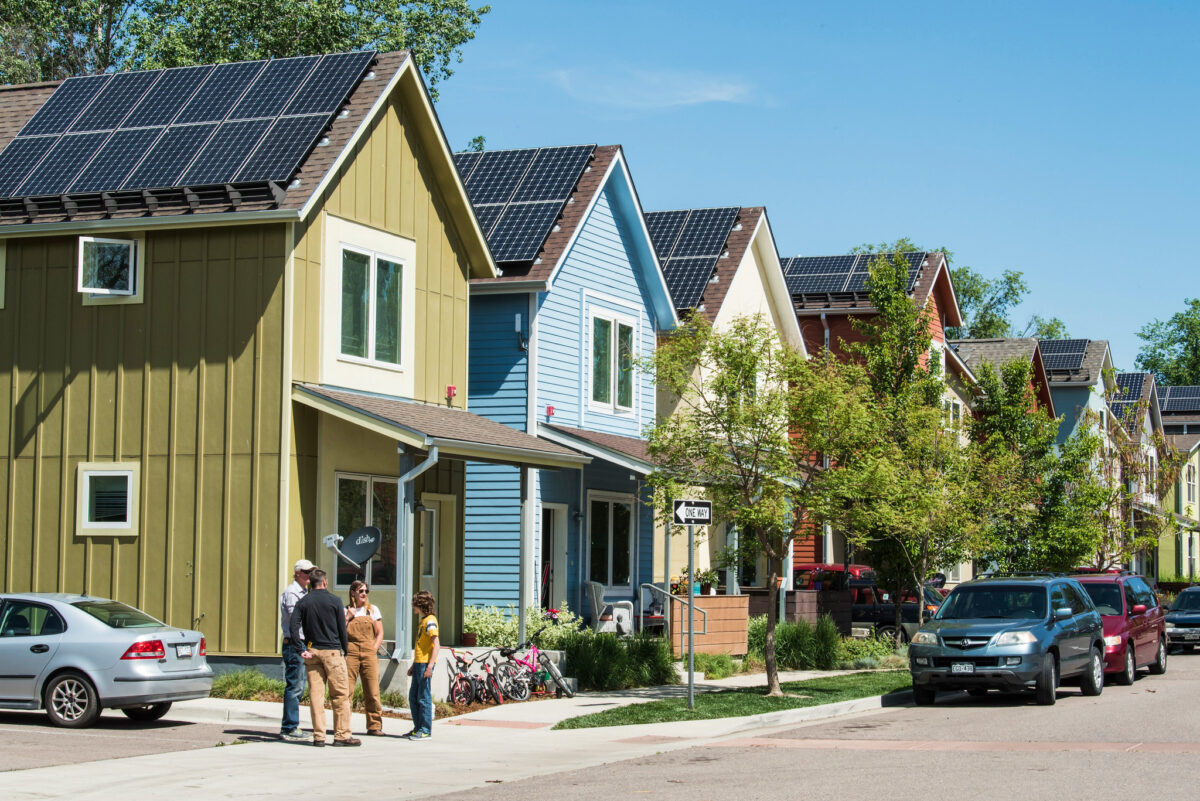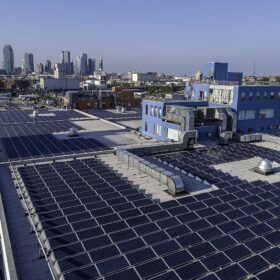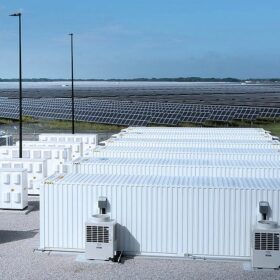Deploying rooftop solar and battery energy storage systems as part of a bill assistance program could help low-income households avoid unsafe energy-cutting measures while improving long-term energy affordability and security, found a peer-reviewed study from the U.S. Department of Energy’s Pacific Northwest National Laboratory.
Energy insecurity, or the inability to afford energy needs, affects most low-income households in the United States and leads to risky choices and additional insecurities including food and health.
Government programs for low-income households unable to afford basic energy needs usually use income to determine the participants’ eligibility. However, people whose incomes are close When this happens, the researchers said these households will usually turn to to energy-limiting behaviors as a strategy to lower their electric utility bills.
Additionally, the report said that while traditional bill assistance programs can be incredibly valuable to those who are deeply struggling to pay their utility bills, these programs’ impact is temporary, as bill assistance does not address the factors that contribute to its need.
The behavioral adjustments these households often employ are often beyond a matter of minor inconvenience or discomfort.
“Managing energy insecurity may lead some to turn to unsafe energy-limiting behaviors, such as setting the thermostat in their homes to uncomfortable or even unsafe temperatures, which can dramatically cut energy use,” the report said. (note that the Occupational Safety and Health Administration (OSHA) regulates workplace thermostat setpoints between 68 and 78 degrees).
According to the U.S. Energy Information Administration 2020 Residential Energy Consumption Survey, 33.58 million households experience energy insecurity. Other energy-coping strategies can include prioritizing energy bills over other basic needs, such as food, transportation or healthcare, or limiting their use of energy services, such as heating, cooling, water heating and cooking. The survey also found that 24.6 million households prioritized paying for energy over food or medicine, 6.35 million could not afford to use air-conditioning equipment, and 4.93 million could not afford to use heating equipment.
The aforementioned actions are a small sample of the energy insecure behavioral changes mentioned in the report.
Taken together, the “severe energy-limiting behavior offered an average 42% energy and utility bill savings compared to 22% energy savings and 29% bill savings from renewable systems.” The savings potential for both measures varied by climate region.
Additionally, the 42% bill savings from drastic behavioral changes dramatically reduces the likelihood that such a household would be captured by high energy burden or high energy use intensity thresholds designed to target households in need of programmatic assistance.
These findings highlight the potential role that residential rooftop solar and behind-the-meter energy storage could play as long-term intervention strategies to minimize the extent to which households must engage in unsafe levels of energy-limiting behaviors, the report found.

Image Jessica Kerby, Diana Rucavado Rojas and Bethel Tarekegne
“Although they appear on paper as energy-efficient, these households struggling to pay their utility and living expenses are likely to fall through some of the traditional programmatic nets designed to provide much-needed relief. Extreme temperature setpoints jeopardize the health and safety of the occupants, creating environments of excess moisture prone to mold growth and poor air quality. Uncomfortable indoor temperatures can disrupt sleep patterns and make it difficult for adults to work remotely and for children to complete their homework. Rationing appliance usage and constantly weighing the costs to operate with the benefits of use creates a tremendous cycle of stress for households already managing financial hardship.” said the Pacific Northwest National Laboratory study.
Utility rate design can also affect the savings potential of both energy-limiting behaviors and renewable systems, depending on whether energy-shifting behavior, energy generation, and energy arbitrage opportunities align favorably with pricing signals. Simulations were performed for two representative TOU rate designs to reflect commonly available rate structures: a two-tier seasonal rate and a three-tier yearly rate. The variation of simulated energy and bill savings from the same measures due to differences in TOU rate structure was negligible; the average difference in energy savings was less than 1% and the average difference in bill savings was 3.1% from the renewable system and 1.63% from the energy-limiting behavior.
The study used a standard 7.5 kW solar array and a 13.5-kWh energy storage system to conduct simulations to determine whether residential rooftop solar and behind-the-meter energy storage are potential mechanisms to alleviate the need for these households to engage in energy-limiting behaviors. With a 29% bill savings and a 22% energy savings, these systems are likely to offset about two-thirds of the utility-bill savings that they would achieve through severe energy-limiting behavior.
“While a system is therefore unlikely to be capable of completely alleviating a household’s stress related to bill management, providing access to an alternative bill savings mechanism that does not require the household to ration or substantially curtail their energy use could enable struggling households to live in their homes with comfort and dignity,” the report said.
Deploying rooftop solar and battery energy storage systems as part of a bill assistance program would directly support energy affordability and energy security, while allowing recipients to live safely and comfortably in their homes while affording necessities like food and medicine.
Also read: Energy-insecure households in the U.S. pay 27% more for electricity than others
This content is protected by copyright and may not be reused. If you want to cooperate with us and would like to reuse some of our content, please contact: editors@pv-magazine.com.









By submitting this form you agree to pv magazine using your data for the purposes of publishing your comment.
Your personal data will only be disclosed or otherwise transmitted to third parties for the purposes of spam filtering or if this is necessary for technical maintenance of the website. Any other transfer to third parties will not take place unless this is justified on the basis of applicable data protection regulations or if pv magazine is legally obliged to do so.
You may revoke this consent at any time with effect for the future, in which case your personal data will be deleted immediately. Otherwise, your data will be deleted if pv magazine has processed your request or the purpose of data storage is fulfilled.
Further information on data privacy can be found in our Data Protection Policy.